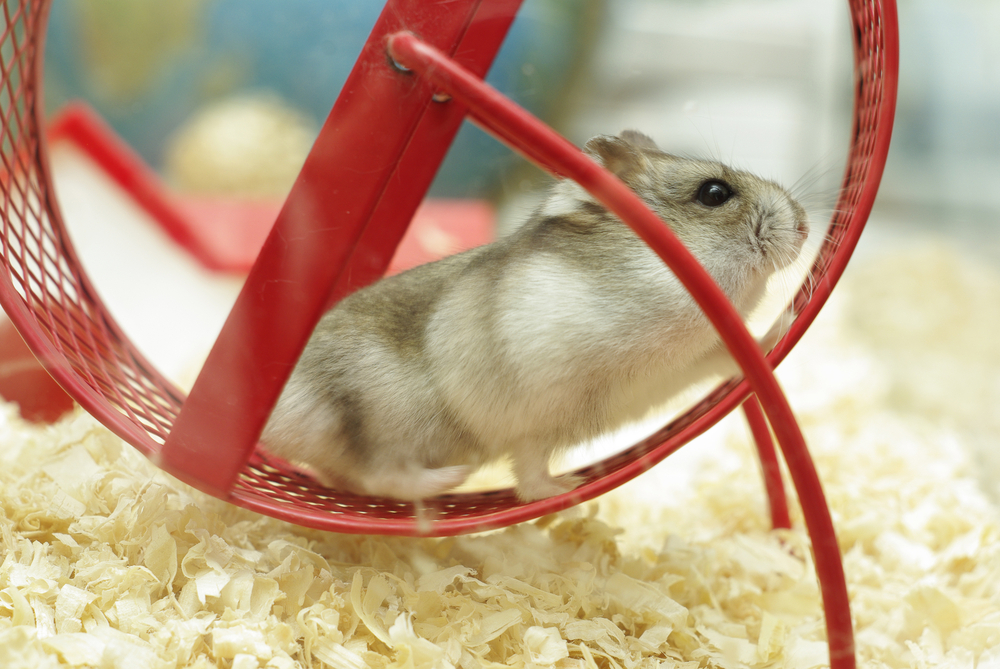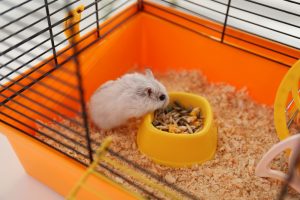
Hamsters are cute pets, but unfortunately, your hamsters don’t come with an instruction manual. But there’s no need to be concerned; we’ve put together this great guide that will answer the most pressing question that any hamster parent has: how do you take care of a hamster?
In this simple guide, we’ll be discussing a few basic things about proper hamster care. But first thing’s first: when you get a hamster, make sure you have a nice home ready for it.

Making A Home For Your Hamster
Setting up your hamster’s home means that you’re going to have to buy a few things first. You’ll need a cage, some hamster food, an exercise wheel, a water bottle, and bedding for your hamster. These items will be easily available at your nearest pet store. Now all you have to do is set up the cage and install all the other items you’ve bought into the cage. The result will be a friendly home for your hamster.
Please make sure that the hamster’s home is ready before you bring it home. Transitioning from one environment to another is a stressful experience for an animal, and you can make the process as smooth as possible by providing a comfortable home to the hamster straight away.
There are lots of toys that can be found at a pet store that will make your hamster feel that its new home is simply fantastic. These cute little animals love to chew, so give them a few chew toys, and they’ll be as happy as can be. Another valuable tip for making your hamster take to its new home is to put some wood shavings or bedding from its previous home into the new one you’ve made for them.
Once your hamster is comfortably settled in, the next thing to do is feed it.

Feeding Your Hamster
There are a number of pellet-based diets that are designed especially for hamsters which you can buy from your nearest supermarket. You can talk to your vet too to see if they have any recommendations for which brand or type of food you should go for. Feed your pet frequently as hamsters have a fast metabolism.
Hamsters will also stay healthier if you feed them fresh vegetables occasionally. Carrots, kale, collard greens, and zucchini are some vegetables that your hamster will love. Fresh fruits are another healthy supplement that you should add to your pet’s diet. Bananas, apples, and melons are all suitable fruity supplements for hamsters. You can also offer your pet Alfalfa hay and raisins as treats when you want to reward your cute little friend.

Hydration is also important for a hamster, so try to make sure that your hamster always has some fresh, clean water to drink.
While feeding your hamsters a proper diet is a great place to start, there are a few other things you should take care of to ensure your hamster remains healthy.
Keeping Your Hamster Healthy
When it comes to taking care of a hamster, it’s important to understand that they require a clean living environment. So you’re going to have to keep your pet’s cage as clean as possible. If a hamster isn’t living in a clean cage, it can get sick from a number of diseases. And some of these diseases can be transmitted to people, so keeping your hamster’s cage clean is in your best interest as well as your pet’s.
Fortunately, cleaning your hamster’s cage is an easy job to do. All you have to do is follow some simple steps. The first thing you need to do is move your hamster out of the cage and put it in a safe place. If you’ve got another cage or a container that your pet won’t be able to get out of, you can put your furry friend in it while you clean its cage.

Cleaning the cage properly means you should take out all the old bedding and get rid of it. Then you can use a cleaning agent, like soap, bleach, or vinegar, to thoroughly wash the cage. Hamsters are highly-sensitive to smells, so make sure to wash off the cleaning agent properly. Removing all traces of the cleaning agent will ensure that your hamster isn’t disturbed by any strong smells.
Once the cage is clean, you can put in fresh, clean bedding for your pet. Now your hamster’s cage is completely clean, and you can put it back into its home. While cleaning a hamster’s cage may seem like a chore, it’s something that you shouldn’t put off too long. Good hygiene means good health for your little pet.
But even if you keep your pet’s cage clean, there is a chance that it could get sick because of something else. It’s a good idea to take your little pet to the vet when you first bring it home. Your vet will perform a physical exam for your hamster to see if it’s healthy. After that, schedule annual visits with your vet so you can get regular check-ups for your hamster to see if it’s doing ok.

There are a few other signs that you should keep an eye out for that could tell you your hamster might be ill. If your hamster is having trouble breathing or has a runny nose, it could be a sign of a respiratory infection. So you should contact your vet to see if it’s something you need to be worried about.
Hamsters can also have digestive problems that could mean a visit to the vet. Irregular eating or loose stools could be a sign that your hamster is having some stomach issues. Sometimes changes in diet can produce these signs or feeding your hamster something that isn’t good for it. To prevent problems like this, you should ask your vet before feeding your hamster anything you think it might not be able to handle.
You should also take your hamster to see the vet if you see bald patches on its skin. The bald patches can be signs of a skin condition which your vet should be able to give you an ointment or medicine for. Overgrown teeth are another common hamster problem that your vet will be able to fix without any problem. In short, if you see anything unusual that you think might be a sign of something wrong with your hamster, don’t hesitate to contact your vet and get their opinion.






